In this recipe for slow cooker short ribs, the braising liquid is simple, but flavorful. The basis is a combination of sautéed onion and garlic. Beef broth and worcestershire sauce is added. The real kicker in this recipe is one fresh sprig of rosemary. It may seem simple, but the long cooking time will infuse the rosemary flavor throughout the liquid and the meat. Just be warned, the smell in your house will make you drool!
For a standard oven braising option, check out our braised beef short rib recipe.
Why Our Recipe
- Simple ingredients combine to create big flavors.
- Minimal prep time at 15 minutes.
- Serve with the drippings or turn them into gravy.
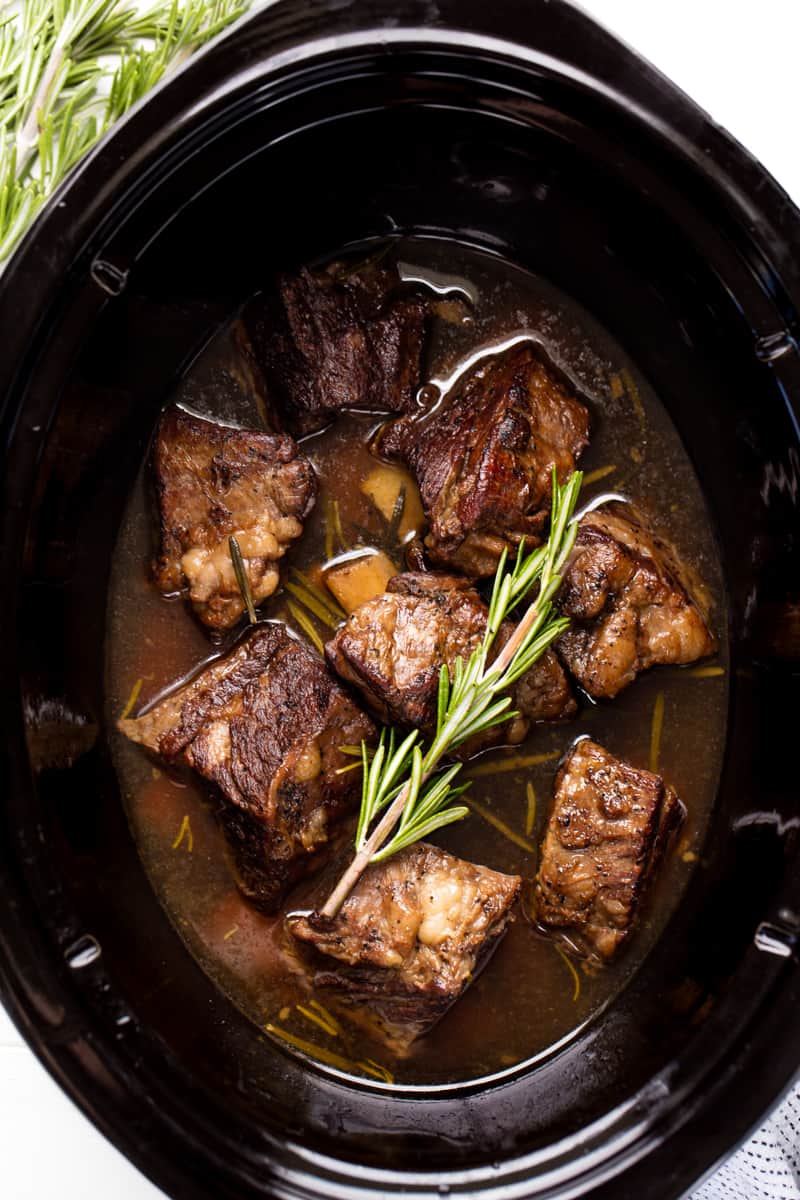
Ingredient Notes
Dive into the heart of this recipe with our ingredient breakdown, where each component’s role is as crucial as the next. We also offer thoughtful substitutions, ensuring this dish is adaptable to various tastes and dietary needs.
- Beef Short Ribs: The star of the dish, choose well-marbled ribs for the best flavor. You can use either bone-in or boneless short ribs for this recipe. Use whichever you prefer!
- Broth: Beef broth is preferred, use a reduced-sodium option to better control the flavor.
- Worcestershire Sauce: Adds depth; soy sauce or balsamic vinegar can be substitutes.
- Herbs and Spices: Rosemary, garlic, and onion powder are key but feel free to experiment with your favorites.
Choosing the Ribs
Beef short ribs come in various cuts, each offering a unique texture and flavor profile, crucial to the success of your dish. The two primary types you’ll encounter are Chuck Short Ribs and Plate Short Ribs.
Chuck Short Ribs are cut from the shoulder area and are known for their meaty texture. They tend to be leaner but are packed with beefy flavors. When selecting chuck ribs, look for pieces with a good amount of meat on the bones and visible marbling, as this fat contributes to the tenderness and flavor during slow cooking.
Plate Short Ribs, on the other hand, are cut from the lower rib area, closer to the belly of the cow. They are generally more marbled than chuck ribs, resulting in a richer flavor and a more tender texture when cooked. Plate short ribs are typically larger, with a higher fat content, which is ideal for slow cooking as it renders down, infusing the meat with succulent flavors.
When choosing beef short ribs, regardless of the cut, always look for ribs with a deep red color and consistent marbling. Avoid ribs that have a lot of surface fat or are discolored. Freshness is key, so ribs that smell clean and have a firm texture are ideal. Remember, the quality of the meat greatly influences the final dish, so opting for the best your budget allows will yield the most flavorful and tender results.
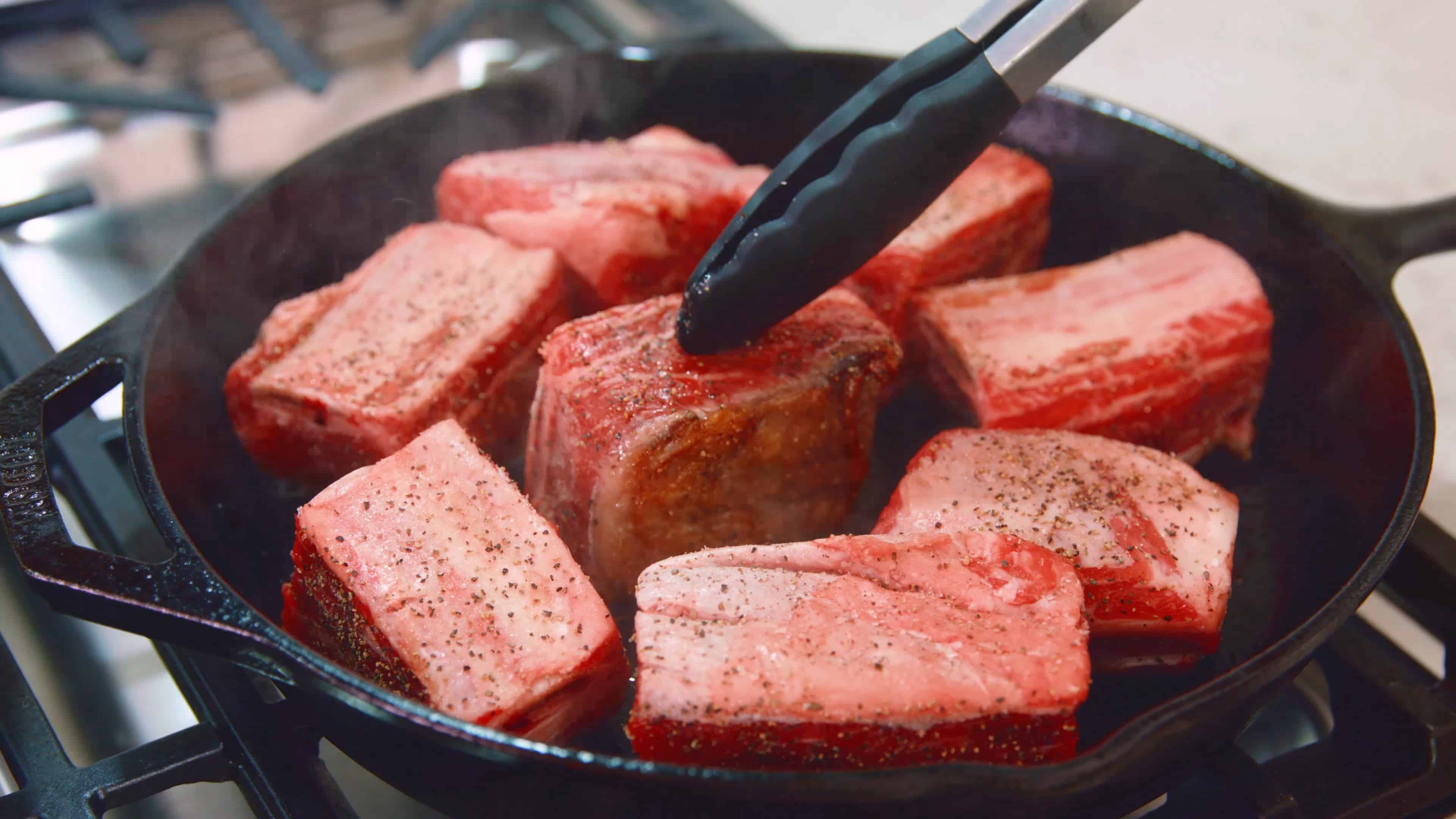
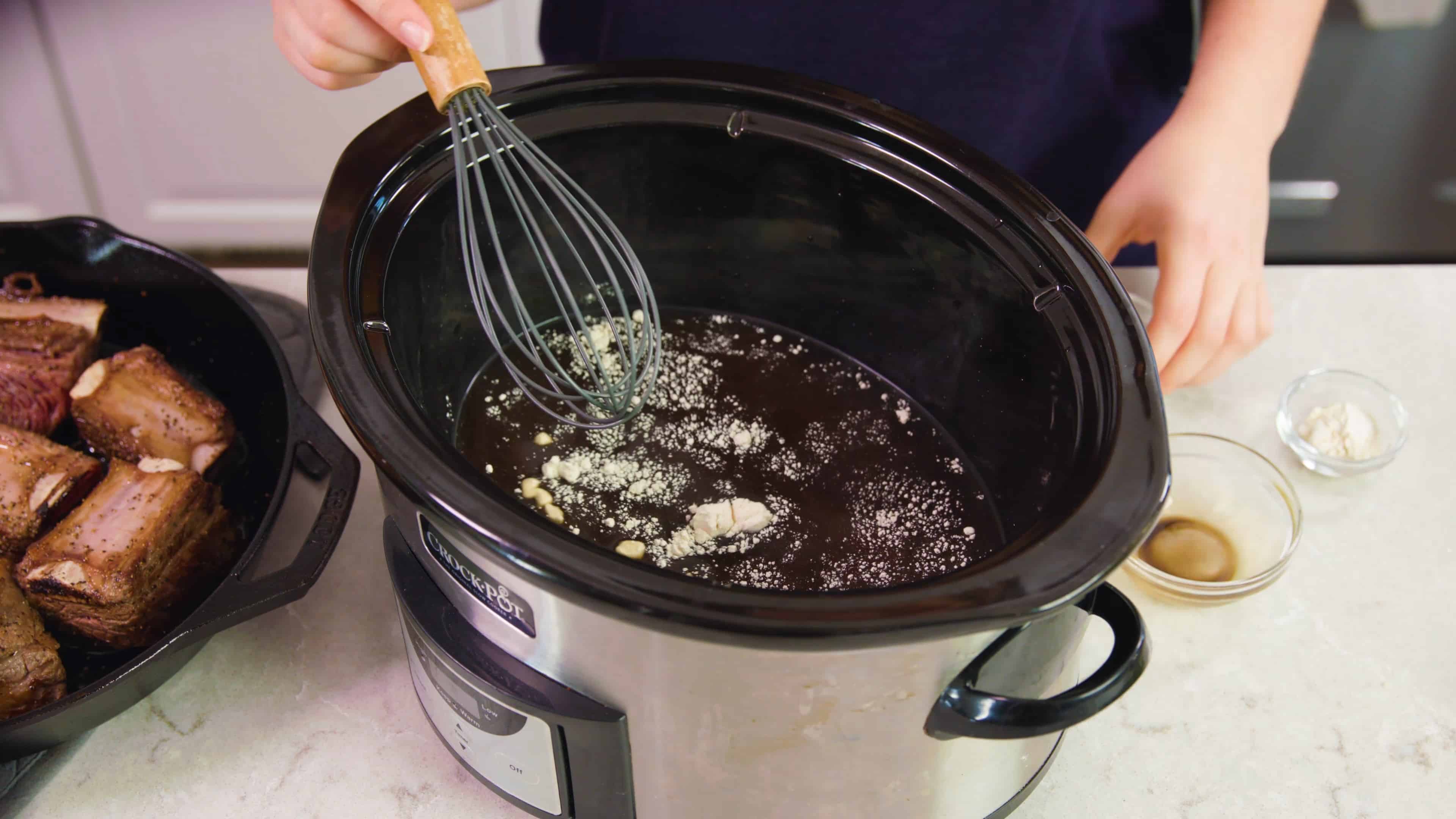
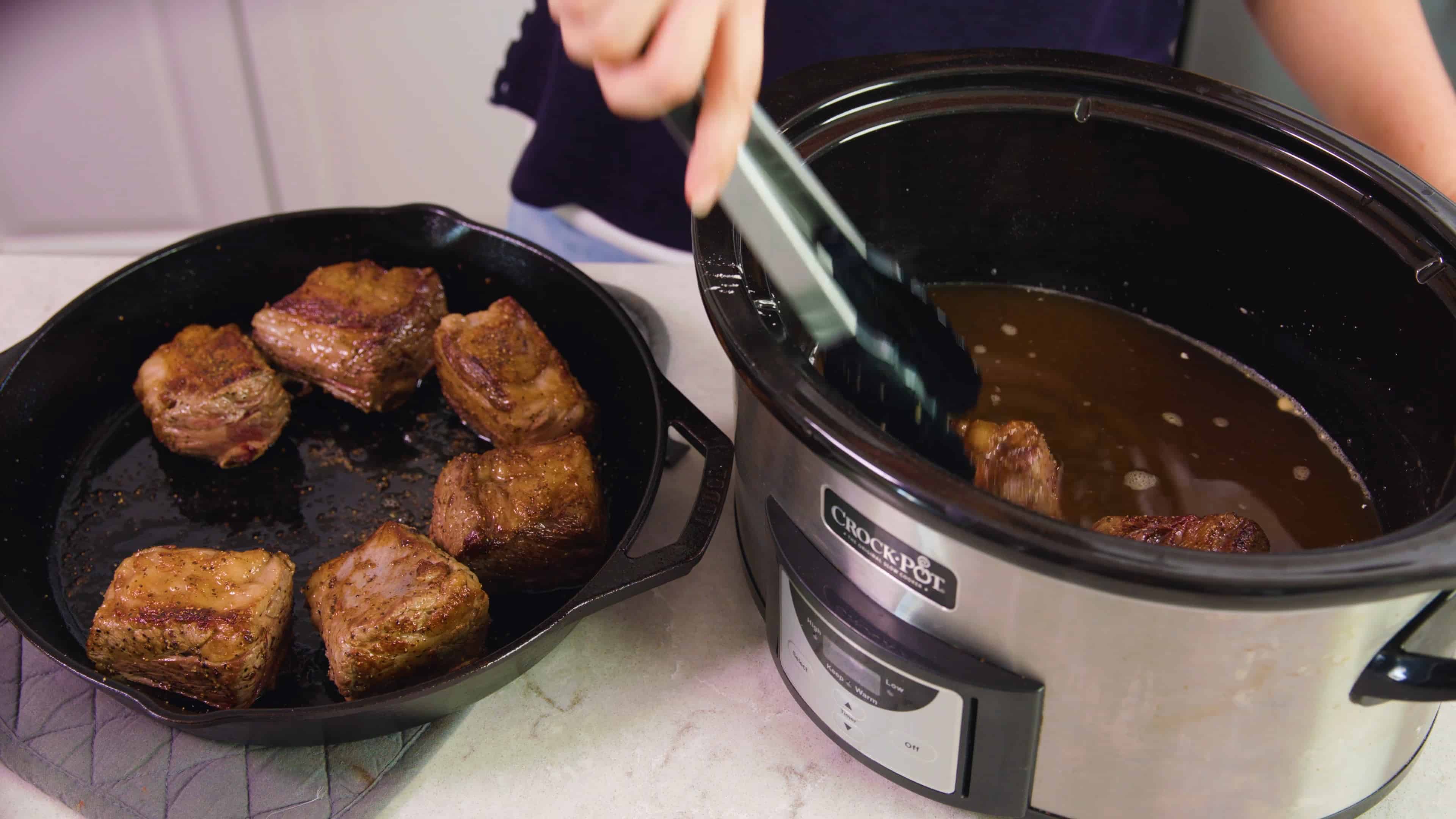
Use Your Juices
Don’t let those delicious juices go to waste!
Make It a Gravy: Melt 2 tablespoons of butter in a saucepan. Add in 2 tablespoons of flour and whisk together into a paste. Pour in strained juices and heat over medium-high heat until thickened.
Make It a Reduction: Remove the meat and pour the juices into a saucepan. Bring to a boil, reduce heat, and simmer until sauce reduces (about 15 minutes). For a smooth sauce, you’d want to strain it first.
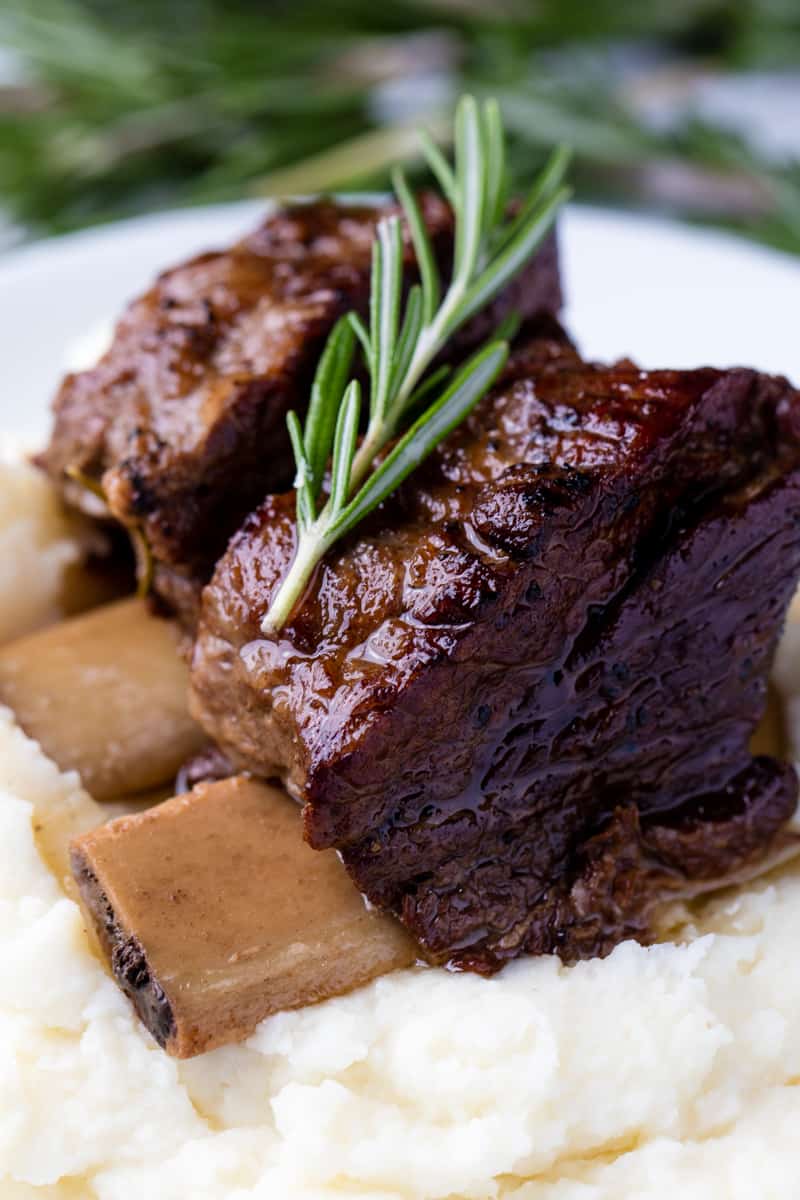
Storage & Reheating Instructions
Refrigerate leftovers in an airtight container for up to 3 days.
Reheat on the stovetop in a covered saucepan over medium heat, adding a bit of broth or water. Stir occasionally and heat until the ribs are warmed thoroughly.
Reheat in the microwave: Cover the ribs and set the microwave to a medium heat setting. Heat in short intervals, stirring in between, until hot. Be cautious as microwaving can unevenly heat and sometimes dry out the meat.
Serve your short ribs with…
Watch the video below where Rachel will walk you through every step of this recipe. Sometimes it helps to have a visual, and we’ve always got you covered with our cooking show. You can find the complete collection of recipes on YouTube, Facebook Watch, or our Facebook Page, or right here on our website with their corresponding recipes.
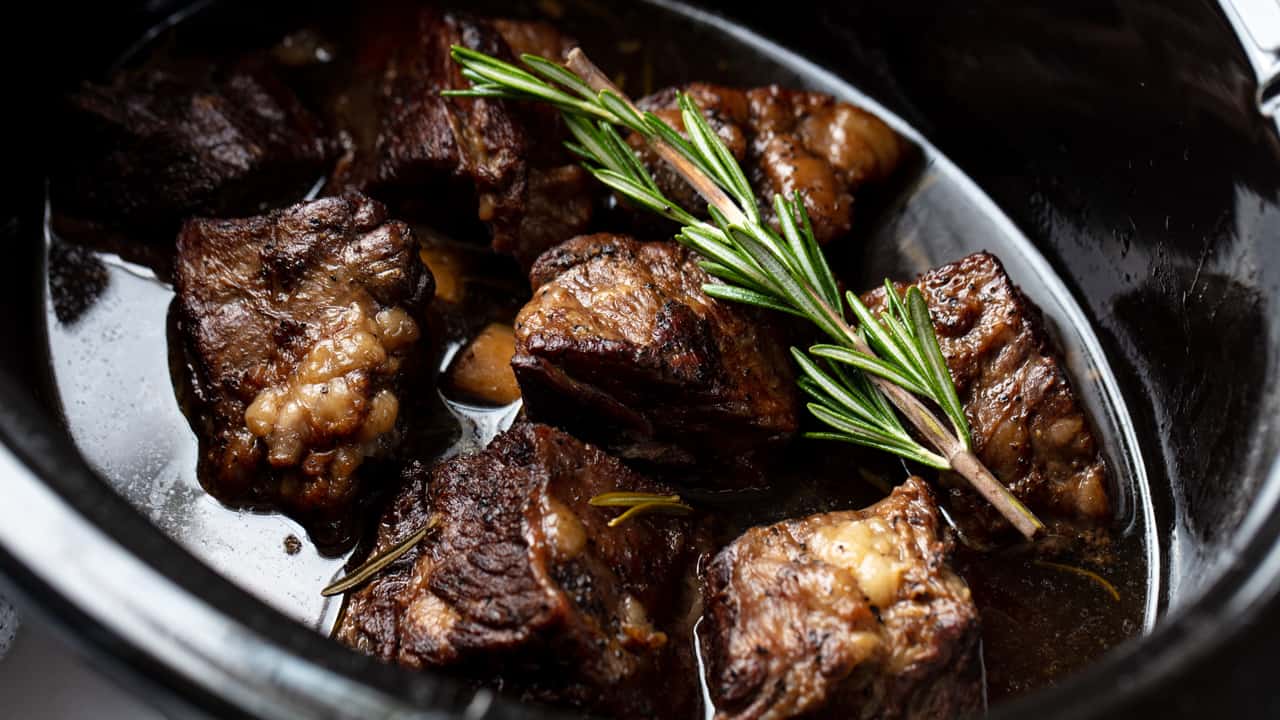
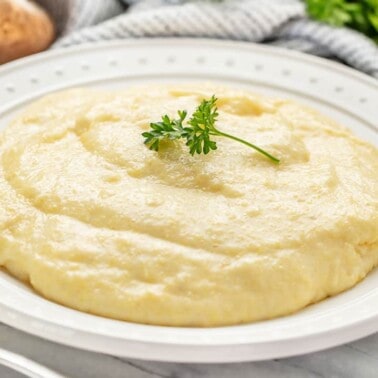
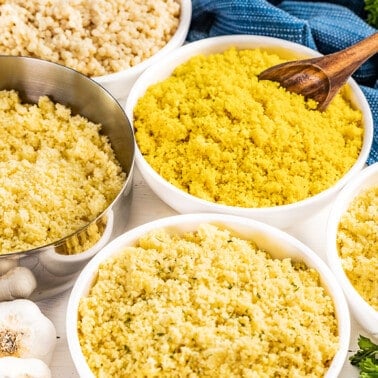
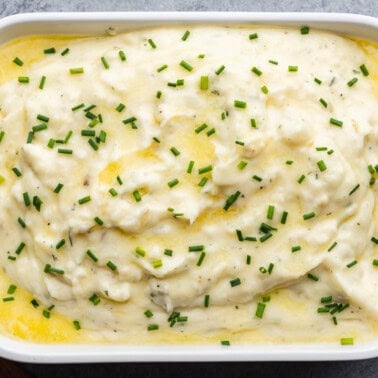
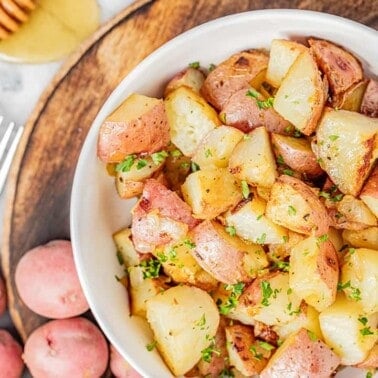
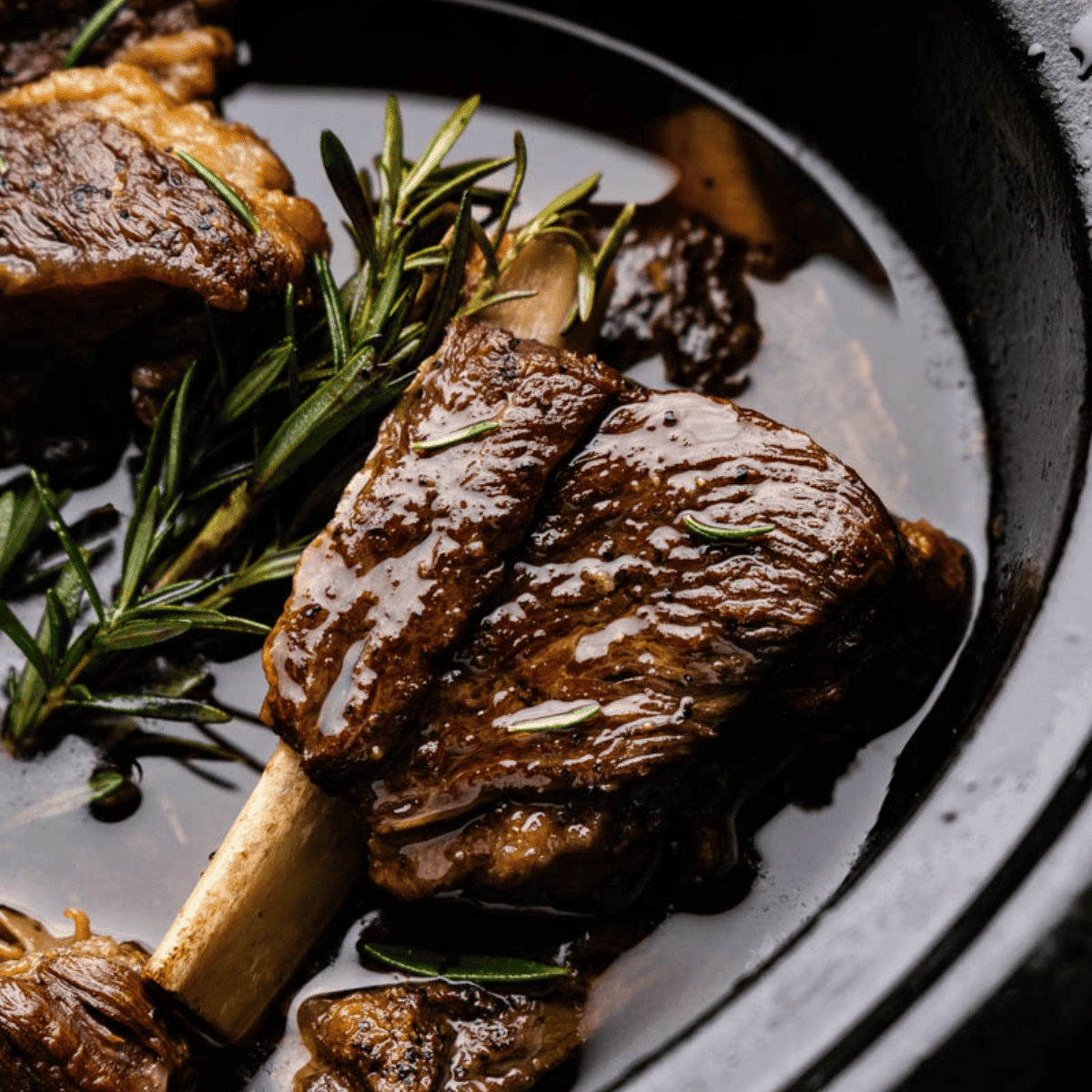
Tried it for the first time, didn’t change a thing, and dang, these things fell right off the bone. Gotta sear them to help keep them together, in my opinion. 8 hours was enough to make it come out perfect!
Do you have to braise them first. Want to combine it all in crock pot and let it sit in the fridge tomorrow so in the morning before work start them
No, you don’t have to sear them first. It does add extra flavor and texture, but it’s not necessary.
Tried this recipe a few months ago – with hesitation because I had never cooked beef short ribs before……Absolutely smashed it! So delicious and so tender. No need to adjust any part of the recipe, as I sometimes do after cooking something for the first time. Cooking it again and I’m trying your suggestion of the Honey Roasted Potatoes as a side dish…….
I have made this recipe a number of times and the short ribs are absolutely delicious and tender. No need to adjust this recipe at all.
Love this recipe! You can also pressure cook them for 3 hours to speed up the process 🙂
Pressure cook for 3 hours??? You are insane lmao!!
Can I double this recipe in same size crockpot and what adjustments need to be made? I know sometimes liquids are not doubled exactly and not sure if timing would be different.
You can double the recipe without any special changes on this one. Enjoy!
Hi,
Do you place on low or high settings and for how long?
Thanks!
These are best cooked on the low setting for 8 hours.
Can the meat be seared in advance and combined with other ingredients in a freezer bag to freeze as a future dump and go crock pot meal prep?
You definitely can. The issue is always going to be food safety of going from freezer to slow cooker, which is not recommended in general. What would be best is to let it thaw in the freezer overnight and then put it in the slow cooker.
This was The Best meal I’ve ever made. Definitely a keeper for the books. Made smashed potatoes for side. My sister is still ranting about this. Thank you for the recipe!!
PS didn’t need gravy it was that good!
High praises!!!!
Been cooking for someone, and or family for 50 years! And have never cooked Short Ribs! Now I know what we’ve been missing! Didnt have fresh Rosemary so threw in a good 4 Tablespoons of Freeze Dried, didnt have any Wine But Cooking Sherry and used 1/2 Cup, then added 2 huge sliced Onions, and threw in 15 Whole Cloves of Garlic a few chopped, Baby Carrots, Fresh Green Beans, Potatoes…. Cooked on High in the Crock Pot 7 hours (added veggies at 5 hours) and BAMMM! Served over Noodles, with Sliced Sourdough Bread and Real Butter and the 4 of us ate it ALL! Found these discounted and will be on the lookout for marked down Short Ribs NOW & Forever! Thanks for the recipe!
Hi Rebekah. I just made this recipe and it was bland. Where did you find wine, etc. in the recipe? The one I printed just called for beef broth.